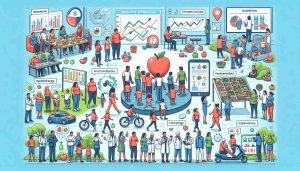The Unforeseen Impact of Budget Cuts on Rural Communities
3 min read
A recent governmental decision regarding budget allocation has had a significant effect on farmers, causing unrest and potential conflict between rural and urban populations.
The adjustment in spending has led to unforeseen consequences in the agricultural sector, stirring emotions among country dwellers. The situation has reached a boiling point, reminiscent of historical clashes between different societal groups.
Rural communities are feeling the brunt of this unexpected turn of events, igniting a sense of urgency and frustration. Farmers and their supporters are considering taking to the streets in a manner reminiscent of past protests. This escalation could result in a rift between those living in the countryside and urban areas.
It is crucial to address the underlying issues that have led to this divide and seek solutions that benefit both farmers and the broader population. Collaboration and understanding are key to preventing further tension and ensuring the well-being of all citizens, irrespective of their place of residence.
In conclusion, the implications of the budget changes on rural communities showcase the need for effective communication and equitable decision-making. By acknowledging the concerns of farmers and taking proactive steps towards resolution, a harmonious coexistence between rural and urban populations can be maintained.
Understanding the Unforeseen Impact of Budget Cuts on Rural Communities
The recent budget cuts have not only affected farmers but have also had ripple effects on various aspects of rural communities that were not initially anticipated. The repercussions of reduced funding extend beyond the agricultural sector, impacting essential services and infrastructure in these regions. This raises important questions about the broader implications of budget cuts on rural livelihoods and well-being.
What are some of the key challenges associated with the budget cuts?
The primary challenge is the potential decline in the quality and accessibility of crucial services such as healthcare, education, and transportation in rural areas. Infrastructure maintenance and development projects may also suffer, leading to a deterioration in overall living standards. Another concern is the economic vitality of rural communities, as reduced support for agriculture can have far-reaching consequences on local economies.
What are the advantages and disadvantages of the budget cuts for rural communities?
One advantage could be the reallocation of resources to address pressing issues in other sectors or regions. However, the disadvantages are more pronounced, with rural populations bearing the brunt of reduced funding. The lack of adequate investment in rural development may widen existing disparities between urban and rural areas, exacerbating social inequalities. Additionally, decreased support for agriculture could jeopardize food security and economic sustainability in these communities.
Key Controversies and Solutions
A key controversy surrounding budget cuts in rural communities is the perceived neglect of the unique needs and challenges faced by these populations. Balancing budget constraints with the well-being of rural residents remains a contentious issue. Solutions entail engaging stakeholders in transparent decision-making processes, prioritizing targeted investments that address specific rural development needs, and implementing long-term strategies to mitigate the negative impacts of budget cuts.
In light of these complexities, it is imperative to approach budget allocation with a comprehensive understanding of the diverse implications on rural communities. By aligning priorities with the sustainable development goals of inclusivity and equity, policymakers can navigate the challenges posed by budget cuts while safeguarding the welfare of all citizens, regardless of their geographic location.
For further insights on rural development and budgetary impacts, visit the Department of Rural Development.






